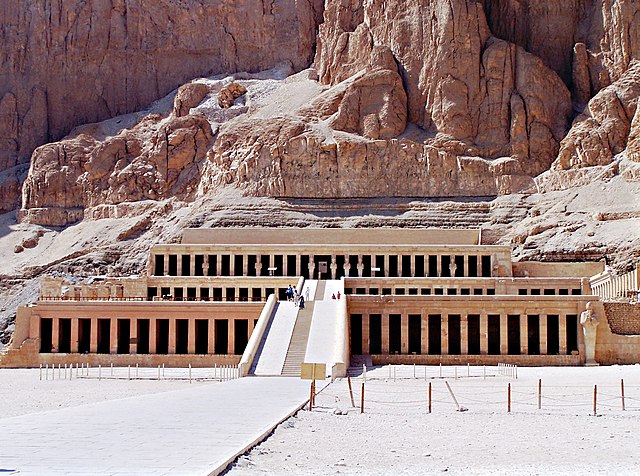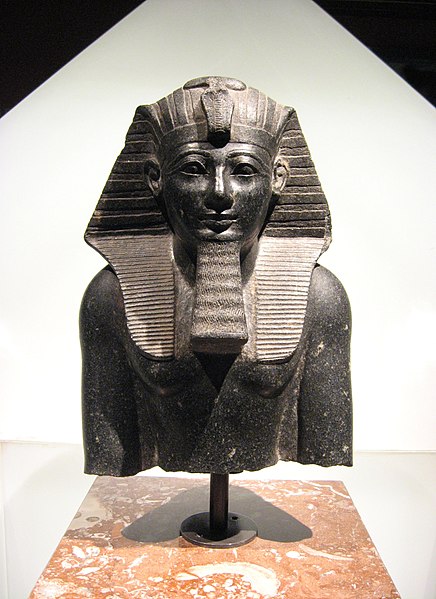The New Kingdom, also referred to as the Egyptian Empire, was the ancient Egyptian nation between the 16th century BC and the 11th century BC. This period of ancient Egyptian history covers the Eighteenth, Nineteenth, and Twentieth Dynasties. Through radiocarbon dating, the establishment of the New Kingdom has been placed between 1570 BC and 1544 BC. The New Kingdom followed the Second Intermediate Period and was succeeded by the Third Intermediate Period. It was the most prosperous time for the Egyptian people and marked the peak of Egypt's power.
Queen Hatshepsut's Temple at Deir el-Bahari, was called Djeser-Djeseru, meaning the Holy of Holies
Thutmosis III, a military man and member of the Thutmosid royal line is commonly called the Napoleon of Egypt because his conquests of the Levant brought Egypt's territories and influence to its greatest extent
Akhenaten, born Amenhotep IV, was the son of Queen Tiye and he turned away from the dominant cult of Amun, relocated the capitol, and promoted that of the Aten as a supreme deity
Nefertiti - the wife of Akhenaten, she held position as co-regent with Akhenaten and may have ruled later as pharaoh in her own right (as she is one of few candidates for the identity of Pharaoh Neferneferuaten)
Ancient Egypt was a civilization of ancient Northeast Africa. It was concentrated along the lower reaches of the Nile River, situated in the place that is now the country Egypt. Ancient Egyptian civilization followed prehistoric Egypt and coalesced around 3100 BC with the political unification of Upper and Lower Egypt under Menes. The history of ancient Egypt unfolded as a series of stable kingdoms interspersed by periods of relative instability known as “Intermediate Periods.” The various kingdoms fall into one of three categories: the Old Kingdom of the Early Bronze Age, the Middle Kingdom of the Middle Bronze Age, or the New Kingdom of the Late Bronze Age.
A typical Naqada II jar decorated with gazelles (Predynastic Period)
Early tomb painting from Nekhen, c. 3500 BC, Naqada, possibly Gerzeh, culture
The Narmer Palette depicts the unification of the Two Lands.
The pyramids of Giza are among the most recognizable symbols of ancient Egyptian civilization.








